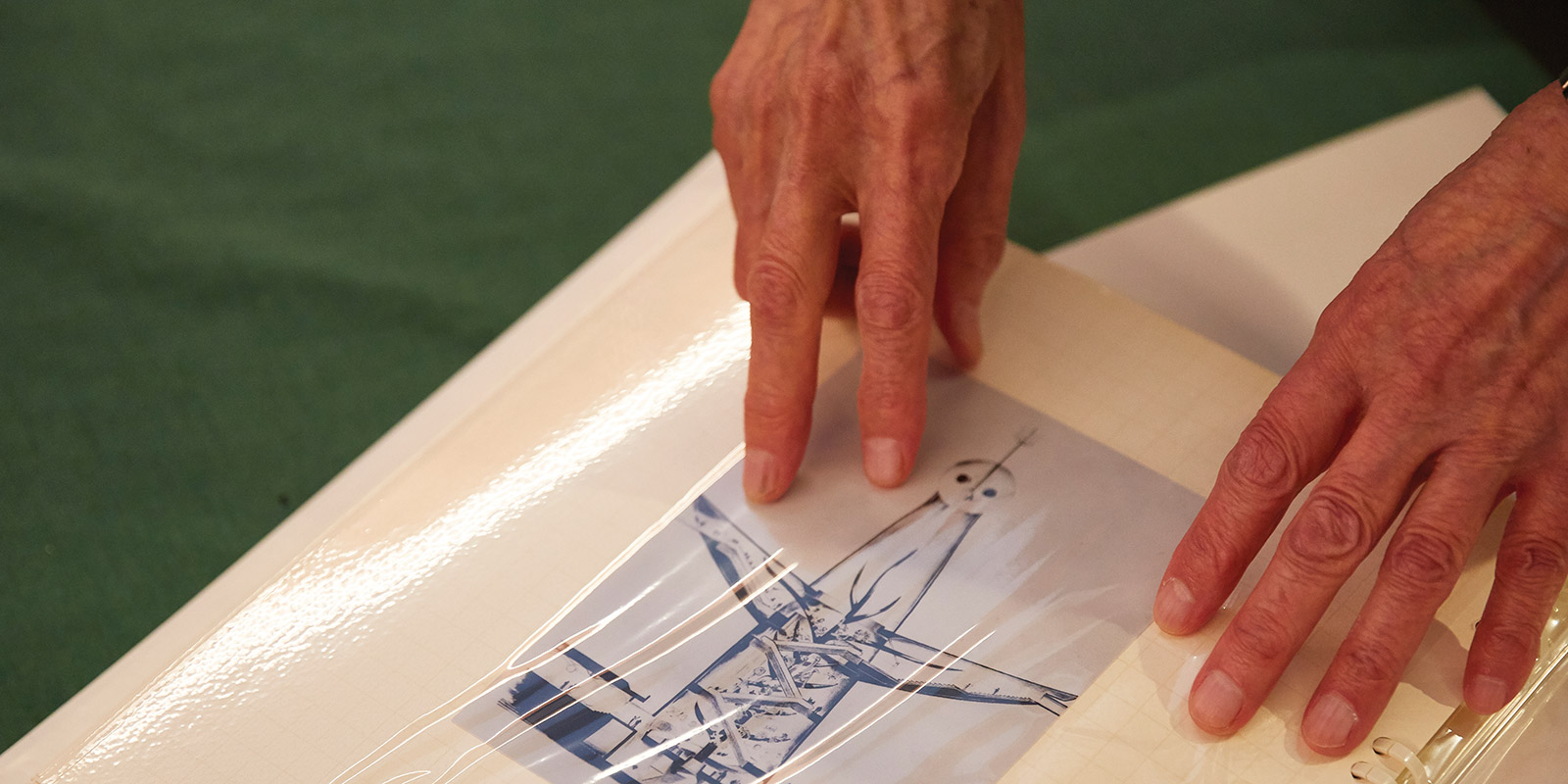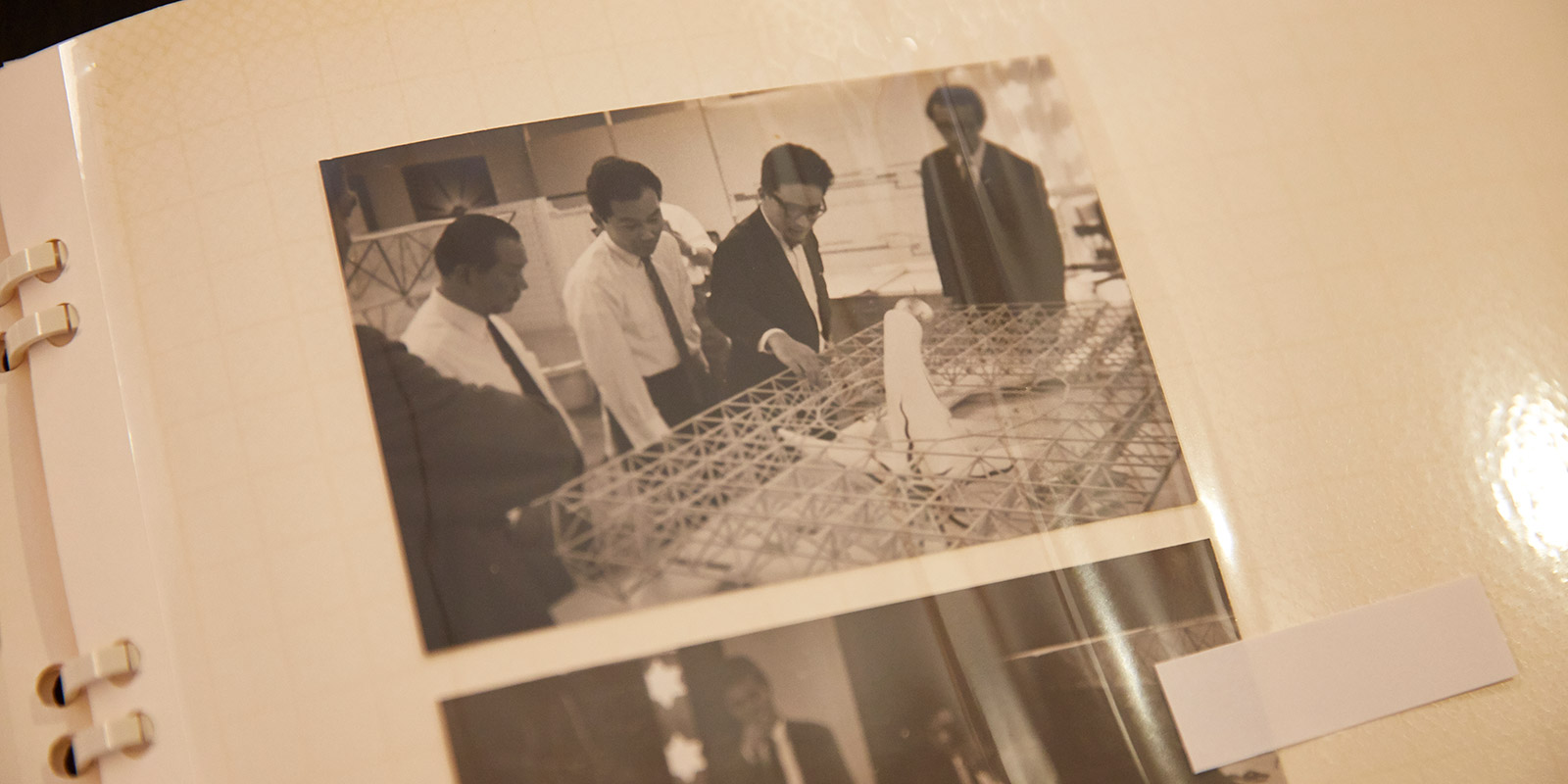Tower records
Taro Okamoto’s artwork Tower of the Sun became the most prominent symbol of the ’70 Expo in Osaka. Kazuhiko Chiba, one of those responsible for its creation, talks to Hajime Oishi about the legacy of the iconic structure
Created by artist Taro Okamoto for Expo ’70, the 70-meter-high Tower of the Sun is an iconic work that aimed to capture the soul of Japan during a period of unprecedented transformation. Kazuhiko Chiba, who had worked as an art director on films including Kei Kumai’s A Chain of Islands (1965), was Okamoto’s right-hand man on the project—although the collaboration didn’t get off to the most promising start.
“He opened his eyes and said, ‘I have no idea what you’re talking about, but you’ve given me free help, so thank you for that”
“He opened his eyes and said, ‘I have no idea what you’re talking about, but you’ve given me free help, so thank you for that”
In the run-up to Expo ’70, a mutual friend had invited a group of filmmakers including Chiba to present their ideas for an Expo pavilion to Okamoto—the problem was that nobody had thought to mention this to the artist. “We went to his atelier one evening, since we’d been told he’d have time [to listen to our presentation], but he was out drinking,” laughs Chiba. When he finally arrived he was like, ‘Who the hell are you people?’ Our presentation took almost an hour, and Okamoto looked like he was sleeping all that time! I couldn’t tell if he was listening. As soon as I finished, he opened his eyes and said, ‘I have no idea what you’re talking about, but it looks like you’ve given me free help, so thank you for that. I’m going to bed,’ and off he went.”
 An early sketch of the Tower of the Sun | Kisa Toyoshima
An early sketch of the Tower of the Sun | Kisa Toyoshima
“While we were building the Tower of the Sun, Taro Okamoto was both a good friend and like a good father to me”
Artistic interpretation
Chiba thought that was the end of the story, but Okamoto had indeed been listening and he liked what he heard. A month later Chiba was recalled for another meeting. “[Okamoto] was like, ‘I’m very grateful for your work. I’ve taken on the role of producer [of the Theme Pavilion] and would like your cooperation’,” says Chiba. “I said, ‘If you want us to do it, we’ll do it.’”
Chiba became a key part of the team, helping to bring Okamoto’s ethereal ideas to life, including his lofty ambitions for the Tower of The Sun. “When Okamoto said stuff like ‘I’m going to make a three-dimensional representation of the evolution of life starting from the amoeba and make the audience walk through it’, those listening would be completely lost, right?” says Chiba, but thanks to to his previous experience he was able to turn such concepts into something tangible. “All my career I’d been working on turning the abstract ideas of filmmakers into something concrete,” he says.
Wasn’t he nervous undertaking such a role for a figure as formidable as Taro Okamoto? “I wasn’t really aware of how big an artist he was, so I couldn’t be scared of him,” laughs Chiba. “That’s why I was able to communicate with him on an equal footing. When you mention Okamoto today, people think of quotes like ‘Art is an explosion’, but in reality he was a really nice old fellow. He was sensitive and kind. While we were building the Tower of the Sun, he was both a good friend and like a good father to me.”
 Kazuhiko Chiba’s photograph album of his time working on the Tower of the Sun | Kisa Toyoshima
Kazuhiko Chiba’s photograph album of his time working on the Tower of the Sun | Kisa Toyoshima
“I think we should be addressing issues that are common to all of humanity, rather than have countries compete with each other”
Okamoto died in 1986 aged 84. Chiba misses his friend, but is proud of what they built. “I feel that there are many incarnations of the Tower of the Sun,” he says. “There’s the artwork that symbolizes the peak of Okamoto’s career, the pride of the people behind the scenes, such as myself and the construction workers. And there’s also the Tower of the Sun that the 64 million people [who visited the Expo] took home with them in their hearts.”
Chiba hopes that the 2025 Expo will result in new artworks of equal power and longevity. “I think we should be addressing issues that are common to all of humanity, rather than have countries compete with each other to see who can produce the fanciest exhibits of science and technology,” he says. “I’d like to see [the Expo] focus on themes like health and disease, life and death, love and hate, and what makes us human.”